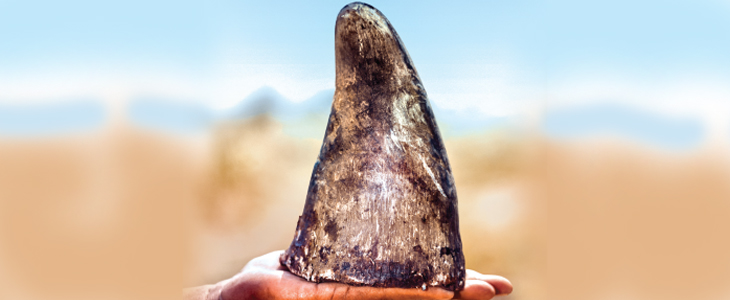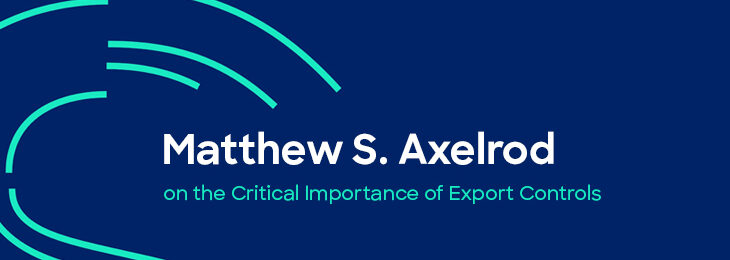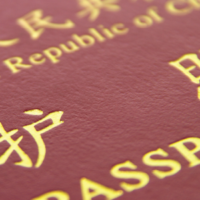
Although anti-money laundering (AML) investigations are ever evolving, one major source of illegal profit internationally remains largely underreported—wildlife trafficking. Wildlife trafficking is a major illegal trade1 and an environmental crime that is estimated to generate between seven billion US dollars and 23 billion US dollars annually.2 The number of critically endangered species and the involvement of poachers is well documented. However, the illicit financial trail of this lucrative illegal trade is only sparsely covered. The unfortunate truth is that ignoring the figurative elephant in the room—wildlife trafficking—contributes to the extinction of actual elephants and other critically endangered species.
Wildlife trafficking is estimated to be the fourth largest criminal enterprise, generating billions of dollars in revenues every year
Wildlife trafficking is defined as the illegal trade, smuggling, poaching, capture or collection of endangered species, protected wildlife, their derivatives or by-products.3 The illegal wildlife trade threatens the extinction of various animal and plant species. It is a practice that impacts more than 7,000 species worldwide to satisfy the illegal market demands for endangered wildlife and their by-products including leather, food, medicines, exotic pets and more.4
The impact goes beyond biodiversity—wildlife trafficking generates billions in revenue annually for criminal networks that often have wide international reach. According to the UN Office on Drugs and Crime (UNODC), wildlife trafficking has been referred to as a major trafficking enterprise and it contributes to broader areas of environmental crimes worldwide or ‘green crimes’.5 Organised crime networks and criminal cartels commit environmental crimes to raise lucrative proceeds and launder illicit funds according to reports by the UN Environment Programme (UNEP) and Interpol.6 To highlight the potential for illicit profit compared to other trafficking enterprises, the black market value of one kilogram of rhino horn7 was once comparable to the value for the equivalent weight in gold, heroin or cocaine.8 Despite these staggering statistics, money laundering investigations related to wildlife trafficking and illicit financial flows have been limited. Criminal investigations tend to focus on the predicate offences such as poaching and illegal possession but beyond poachers, other actors in the cycle—including traders and resellers of endangered species and protected wildlife—also earn illegal proceeds. Historically, this has presented a challenge for international law enforcement agencies in detecting and investigating this crime.
Three Stages of Wildlife Trafficking
Wildlife trafficking is a global crime that impacts different regions across the world. Worldwide, countries can be involved in, or impacted by, one or more of the three stages of wildlife trafficking: source, transit and destination.9
- Source: The first stage indicates where initial activities occur (ie the jurisdiction where poaching and initial transport takes place). These crimes are often facilitated by bribing corrupt officials or individuals with access to the targeted species. At the source location, the profits generated are often the lowest and source countries are potentially the most impacted by the illegal wildlife trade from a biodiversity and economic standpoint.
- Transit: The second stage represents the movement of poached or illegally obtained goods that are disguised and consolidated with other items for transportation. These concealed items clear customs due to known weaknesses in customs controls and/or bribery of corrupt officials.
- Destination: The final stage involves poached, illegally acquired or trafficked goods arriving at their final destination for sale. As the sale of these products may be illegal in some countries, they are often sold at in-person or online black marketplaces where profits for distributors are often the highest.
Wildlife Trafficking in Europe
Wildlife trafficking has often been addressed as a problem both in and for developing countries. However, Europe, as well as western countries including Canada and the US, may be impacted by all three stages of illegal wildlife trade. European countries have been identified as source regions and exporters of certain endangered species, including the European eel and the illegal caviar from sturgeon. European eels, or glass eels, are often illegally exported from Europe to China, Taiwan, Korea and Japan, where they are used for human consumption or in fashion accessories.10 Decreasing populations of wild sturgeon (including the critically endangered beluga), have been an ongoing concern as the international demand has fuelled illegal markets and allowed criminals to thrive. Due to its high price and rarity, caviar is often traded illegally.11 Thus ongoing illegal fishing and trade in caviar, specifically in European countries including Romania and Bulgaria, is threatening the survival of sturgeons.
Wildlife trafficking has often been addressed as a problem both in and for developing countries. However, Europe, as well as western countries including Canada and the US, may be impacted by
all three stages of illegal wildlife trade.
Interpol cites European countries as major transit regions for wildlife trafficking.12 For example, European countries have been identified as transit regions for the illicit trafficking of products13 such as ivory, rhino horn and pangolins, which primarily flow from Africa to Asia. Nevertheless, transit through Europe is not limited to ivory, rhino horn or pangolins. In 2015 alone, approximately 2,000 live reptiles were seized at European borders together with corals and ivory as well as a long list of mammals and live bird species.14
In addition to the source and transit stages, European countries, Canada and the US have also been identified as destination regions for endangered species and their by-products. This includes purchases of rare reptiles and birds as pets or purchases of elephant ivories, animal furs, claws as well as other parts of protected species for collection.15 The high demand for rare specimens and illegal wildlife products in destination countries shows that black market values can be very high for certain species. In addition, high demand, limited supply and generally low penalties are all key factors that influence the participation of organised crime syndicates and criminal cartels in illegal wildlife trade at all stages.16 Therefore, criminal syndicates will continue to benefit from the lucrative trade of illegal wildlife if law enforcement and prosecutors do not improve the abilities to detect, investigate and prosecute these crimes quickly.
Corruption and Organised Crime
Corruption and organised criminal networks facilitate the illegal trade of endangered species internationally. Such a growing threat demands education and collaboration for the various partners in the public and private sectors that are responsible for identifying, deterring and arresting wildlife traffickers.
In 2019, a collaborative report by the Wildlife Monitoring Network (TRAFFIC), World Wide Fund for Nature (WWF), Anti-Corruption Resource Centre (U4), Utrecht University and Northumbria University focused specifically on corruption and wildlife crime in relation to the illegal caviar trade.17 The report cites corruption as a severe threat to wildlife conservation globally, which has negatively impacted conservation program efforts; weakened laws; reduced law enforcement and political support; undermined current laws and regulations; and been a key indicator of the presence of organised crime groups.18 Fuelled by the high demand for wild-sourced products and restricted supplies, organised crime groups have notoriously been involved in trafficking caviar.19
Corruption is a key enabler for criminals involved in illegal wildlife trade at all stages. Moving illegal contraband across borders involves a high level of corruption in conjunction with crimes such as smuggling; forgery of permits; misdeclaration at the time of export or import; fraudulent invoicing; avoidance of human or animal health quarantine as well as other transportation requirements; illegal immigration and use of false passports or identity documents; the payment of bribes; the establishment of front companies to engage in illicit trade; and equipping gangs and organised criminals to engage in illegal logging, fishing and animal poaching.20
Historically, investigations related to the illegal wildlife trade have focused on predicate offences such as poaching or possession of illegal species and their by-products. Despite increasing awareness of the financial component of wildlife trafficking and the lucrative proceeds that fuel criminal involvement at all stages, enforcement and investigations have rarely focused on the financial aspect of the crime. However, due to the nature of this crime, wildlife traffickers need funds to cross multiple jurisdictions and they rely heavily on the financial system to conduct transactions that can be identified in order to trace their activities.21
The Role of Law Enforcement and FIs in Combatting Wildlife Trafficking
Illegal wildlife trade is a transnational crime that relies on established trade routes already used by organised criminal networks for other illegal international trades including human, drugs and arms trafficking. To identify, investigate and understand money laundering as it relates to wildlife trafficking, AML professionals may be able to learn from established money laundering typologies and red flags used to detect and investigate other trafficking-related crimes as well as trade-based money laundering. However, effective and ongoing partnership with law enforcement and non-governmental organisations (NGOs) is important for establishing red flags specific to the illegal wildlife trade. If these techniques prove to be successful, AML professionals may be able to help law enforcement move beyond investigating on predicate offences and expose those who are benefiting financially from the illegal trade throughout the cycle. While this technique will help address the supply side of wildlife trafficking, addressing the demand side through increased awareness and collaboration is equally important.
Wildlife trafficking is becoming an increasing priority for AML professionals and organisations worldwide. The Financial Action Task Force (FATF) declared, ‘…wildlife trafficking is estimated to be the fourth largest criminal enterprise, generating billions of dollars in revenues every year. The illegal trade has links to modern slavery, drugs and arms trade while causing catastrophic damage to endangered species.’22 In September 2019, FATF President Xiangmin Liu met with Prince William and Lord William Hague at Kensington Palace to discuss the United for Wildlife Financial Taskforce, spearheaded by Prince William and The Royal Foundation. They discussed how to build this initiative by focusing the governments of the 205 FATF and the FATF-style regional bodies’ member jurisdictions on tackling wildlife trafficking by following the money.23
AML professionals play a key role in combatting wildlife trafficking. Criminals exploit formal and informal banking channels at various stages of the illegal trade through payments for bribery, facilitating transport, purchasing and selling poached or trafficked goods, as well as laundering illicit proceeds. It is vital that AML professionals establish red flags and typologies indicative of wildlife trafficking throughout the source, transit and destination stages of this illegal cycle. AML professionals may be able to leverage established AML red flags and typologies related to other trafficking crimes as well as trade-based money laundering to identify potential wildlife trafficking red flags and typologies. However, the unique nature of wildlife trafficking will require additional efforts in establishing red flags and typologies specifically aimed at identifying and investigating money laundering related to this crime.
One way FIs can combat wildlife trafficking is by joining the United for Wildlife Financial Taskforce and signing the Mansion House Declaration. Key commitments from the United for Wildlife Financial Taskforce and the Mansion House Declaration include the following:
- Utilising current suspicious activity reporting mechanisms to provide intelligence related to potential wildlife trafficking activity to the relevant regulatory body or law enforcement agency, where permitted by law
- Reviewing intelligence alerts received by the United for Wildlife Financial Taskforce and, where relevant, taking appropriate actions including due diligence screening and necessary steps to identify, investigate and report potentially suspicious financial activity related to wildlife trafficking
- Considering additional actions, including policy amendments that would support the aims of the Taskforce in addition to mechanisms related to financial crime
- Supporting the work of the United for Wildlife Financial Taskforce, promoting the Mansion House Declaration and, where possible, supporting external mechanisms that will enhance the ability of the financial industry to identify potentially suspicious activity related to wildlife trafficking
Conclusion
Although recent updates provide hope, more work is needed from the public and private sectors to combat wildlife trafficking and eradicate senseless extinction caused by poaching, trading and selling endangered species worldwide. Increasing awareness related to the impacts of wildlife trafficking is needed to further invoke action from governments, law enforcement, border services agencies, NGOs and private sector industries, including but not limited to FIs. Increased awareness of the impacts of wildlife trafficking may also result in a decreased public demand for poached, illegally acquired or trafficked species, reducing illicit profits for those involved in all stages of the illegal trade. Despite increasing awareness on the subject and ongoing initiatives aimed at addressing the illegal wildlife trade, continued efforts are required to ensure endangered species are protected while the illicit funds involved are sufficiently investigated by the private and public sectors.
Advisors:
- Chia-Yi Hou, “Wildlife Trade 101,” National Resources Defense Council, 15 August 2019, https://www.nrdc.org/stories/wildlife-trade-101
- “Tackling the illegal wildlife trade as a financial crime,” Financial Action Task Force,
https://www.fatf-gafi.org/publications/fatfgeneral/documents/illegal-wildlife-trade-beijing-nov2019.html - “Criminalization of wildlife trafficking,” United Nations Office on Drugs and Crime, https://www.unodc.org/e4j/en/wildlife-crime/module-3/key-issues/criminalization-of-wildlife-trafficking.html
- "The World Wildlife Seizures (World WISE) database,” United Nations Office on Drugs and Crime,
https://www.unodc.org/documents/data-and-analysis/wildlife/WLC16_Chapter_2.pdf - “Wildlife crime worth USD 8-10 billion annually, ranking it alongside human trafficking, arms and drug dealing in terms of profits: UNODC chief,” United Nations Office on Drugs and Crime, 13 May 2014,
https://www.unodc.org/unodc/en/frontpage/2014/May/wildlife-crime-worth-8-10-billion-annually.html - “UNEP-INTERPOL Report: Value of Environmental Crime up 26%,”United Nations Environment Programme, 4 June 2016, https://www.unenvironment.org/news-and-stories/press-release/unep-interpol-report-value-environmental-crime-26
- “Bulletin on Organised Crime in Southern Africa,” United Nations Office on Drugs and Crime, Issue 1, 2012, https://www.unodc.org/documents/southernafrica/Bulletin_on_organised_crime_in_Southern_Africa/UNODC_ROSAF_-_Bulletin_on_Organised_Crime_in_Southern_Africa_-_Issue_1.pdf
- “Heroin and cocaine prices in Europe and USA,” United Nations Office on Drugs and Crime,
https://dataunodc.un.org/drugs/heroin_and_cocaine_prices_in_eu_and_usa - John Cusack, “Intelligence Briefing—Illegal Wildlife Trafficking,” Financial Crime News, 26 September 2019, https://thefinancialcrimenews.com/illegal-wildlife-trafficking-infographic-by-fcn
- Irene Banos Ruiz, “Europe, a silent hub of illegal wildlife trade,” DW, 20 January 2017,
https://www.dw.com/en/europe-a-silent-hub-of-illegal-wildlife-trade/a-37183459 - Jutta Jahrl, “Illegal caviar trade,” TRAFFIC, 18 June 2013, https://www.traffic.org/publications/reports/illegal-caviar-trade-in-bulgaria-and-romania/
- “Wildlife crime,” Interpol, https://www.interpol.int/en/Crimes/Environmental-crime/Wildlife-crime
- Irene Banos Ruiz, “Europe, a silent hub of illegal wildlife trade,” DW, 20 January 2017,
https://www.dw.com/en/europe-a-silent-hub-of-illegal-wildlife-trade/a-37183459 - Ibid.
- “Impacts of Illegal Wildlife Trade,” U.S. Department of the Interior, 5 March 2008,
https://www.doi.gov/ocl/hearings/110/IllegalWildlifeTrade_030508 - Maylynn Engler, Rob Parry-Jones, “Opportunity or Threat: The Role of the European Union in Global Wildlife Trade,” TRAFFIC, June 2007, https://www.traffic.org/site/assets/files/3604/opportunity_or_threat_eu_imports.pdf
- Louisa Musing et. al, “Corruption and Wildlife Crime: A Focus on Caviar Trade,” TRAFFIC et. al,
https://www.traffic.org/site/assets/files/11818/corruption-and-caviar-final.pdf - Ibid.
- Ibid.
- John Cusack, “Intelligence Briefing—Illegal Wildlife Trafficking,” Financial Crime News, 26 September 2019, https://thefinancialcrimenews.com/illegal-wildlife-trafficking-infographic-by-fcn
- David Fein, “Illegal wildlife trafficking: it will take a network to defeat the networks,” Standard Chartered, 6 August 2018, https://www.sc.com/en/explore-our-world/illegal-wildlife-trafficking-how-to-defeat-it/
- “Meeting with The Duke of Cambridge on money laundering and illegal wildlife trafficking,” Financial Action Task Force, 12 September 2019, https://www.fatf-gafi.org/publications/fatfgeneral/documents/meeting-the-duke-cambridge-sep-2019.html
- Ibid.










